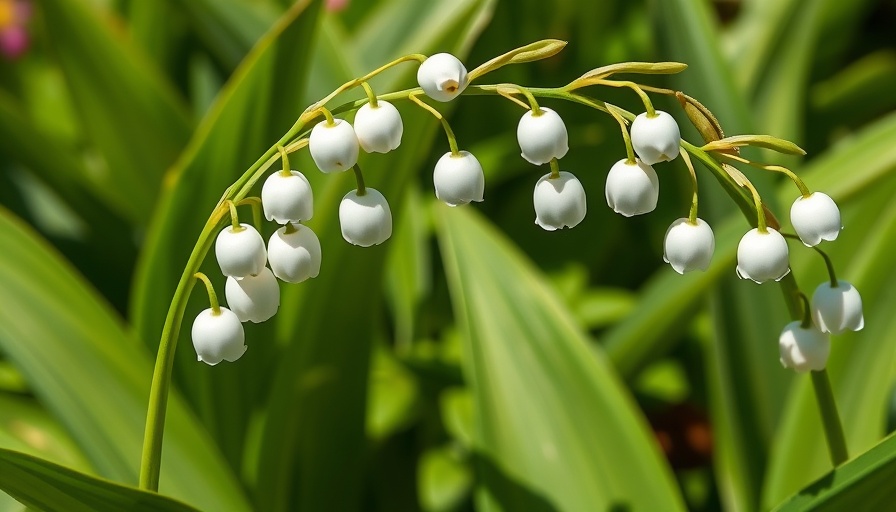
The Hidden Dangers of Lily of the Valley
Lily of the Valley (Convallaria majalis) may appear enchanting with its delicate flower blooms and lush foliage, but this plant hides a darker secret. Often celebrated in gardens for its resilience and fragrant blossoms, it poses serious risks to both humans and pets if ingested. According to ongoing research and anecdotal evidence, the very compounds that contribute to its beauty can lead to severe health issues. This article explores the toxicity of Lily of the Valley and what garden enthusiasts need to know to ensure safety.
Understanding the Toxicity of Lily of the Valley
All parts of Lily of the Valley contain cardiac glycosides, which are lethal compounds that can affect the heart and nervous system. While cases of fatal poisoning are rare, symptoms can still be quite severe. Common reactions include nausea, vomiting, and in extreme cases, irregular heartbeats or even death. The famous saying by Paracelsus often applies here: "the dose makes the poison," reminding us that while small quantities can cause toxins to become medicinal, even minor ingestion of this plant can lead to dangerous consequences.
Symptoms of Ingestion: What to Look For
If you suspect that someone has ingested any part of the Lily of the Valley, it's crucial to watch for certain symptoms. Early signs of poisoning can include: - Nausea and vomiting - Abdominal pain - Diarrhea - Confusion or lethargy - Altered heart rate Anyone displaying these symptoms after potential exposure should seek immediate medical attention. Similarly, pets are at risk; if your furry friend was seen with the plant, contact a veterinarian right away.
The History and Uses of Lily of the Valley
Native to Europe and parts of Asia, Lily of the Valley has a rich history. It has been cultivated for centuries and used in traditional medicine for various ailments. Although its toxicity raises significant concerns, some believe that in controlled and very small doses, it could offer benefits due to its heart-regulating properties. However, the fine line between therapeutic and toxic is one that should not be crossed lightly. Always consult a professional before attempting any self-medication.
Cultivation and Care: Keeping Gardens Safe
For garden lovers, it is essential to know how to manage not only the beautification aspect of plants but also their safety implications. Here are some tips for safely incorporating Lily of the Valley in your garden: - **Choose your location wisely**: If you have small children or pets, consider planting non-toxic alternatives. - **Educate others**: Ensure that everyone who comes into contact with your garden knows about this plant's hazards. - **Consider containment**: To limit spread and accidental ingestion, plant it in contained areas where kids and pets can't easily access it.
Alternatives to Consider for Your Garden
If you're drawn to the charm of Lily of the Valley but concerned about its toxicity, numerous other flowering plants can offer safety alongside beauty, such as: - **Astilbe**: Known for its feather-like blooms and resilience. - **Columbine**: Featuring stunning flowers in a variety of colors and petal shapes. - **Bleeding Heart**: With its unique heart-shaped blooms, this plant captivates while being non-toxic.
Final Thoughts on Gardening with Care
In closing, while Lily of the Valley brings undeniable beauty to any garden, its toxicity cannot be overlooked. As garden enthusiasts, we must prioritize safety alongside aesthetics. Whether you're designing a landscape for ornamental appeal or planning a vegetable garden, consider non-toxic options and educate those around you. Balancing beauty with safety can make your outdoor spaces both visually stunning and welcoming for everyone.
 Add Row
Add Row  Add
Add 




Write A Comment